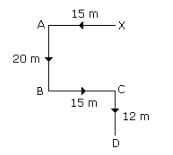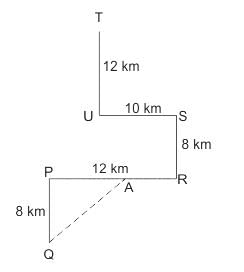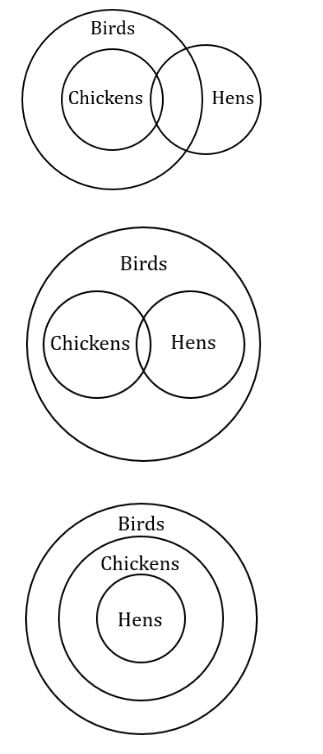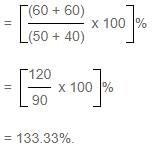Uttarakhand D.El.Ed Mock Test - 2 - UTET MCQ
30 Questions MCQ Test Uttarakhand D.El.Ed Mock Test Series 2025 - Uttarakhand D.El.Ed Mock Test - 2
Who was the contemporary of Buddha and patronized Buddhism?
What was the significance of the Enclosure Movement during the Industrial Revolution?
Who was one of the key leaders in the unification of Italy?
The Bhakra-Nangal project is built on which river in India?
What is the duration of a standard field hockey match in international competitions?
Directions: In the following questions, choose the grammatically correct sentence from among the four options given for each question.
A. She said that Raj had a fall last week and he had been injured.
B. She said that Raj had fallen the previous week and he had injured.
C. She said that Raj had had a fall last week and he was injured.
D. She said that Raj had had a fall the previous week and he had been injured.
Partnership, he said, was a "two-way street", adding of Karzai, "We have to listen and learn. But he's got to listen to us as well".
Which of the following best describes the ecological impact of forest fires reported in Uttarakhand from November 2023 to June 2024?
Direction: In each of the following questions you are given a figure followed by four alternatives (a), (b), (c) and (d). Choose the alternatives which is closely resembles the mirror image of the given combination.
Choose the alternatives which is closely resembles the mirror image of the given combination.

Starting from a point X Jayant walked 15 metres towards West, he turned to his left and walked 20 metres. He then turned to his left and walked 15 metres. He then further turned to his right and walked 12 metres. How far is Jayant from the point X and in which direction?
Direction: Study the following information and answer the given questions carefully.
There are six houses P, Q, R, S, T and U. P is 8 km north of Q. S is 10 km east of U, which is 12 km south of T. S is 8 km north of R, which is 12 km east of P.
Q. What is the shortest distance between house Q and house A, which is exactly between house P and house R?
Statement 1: All chickens are birds.
Statement 2: Some chickens are hens.
Statement 3: Female birds lay eggs.
If the above statement are facts, then which of the following must also be a fact?
I. All birds lay eggs.
II. Hens are birds.
III. Some chickens are not hens.
Direction: Study the following information carefully and answer the below questions
In a family of seven members, there are two married couples. Nobody has any grandchildren. The gender of X and R are the same. V is the brother-in-law of R who is the son of K. K has two children. M is the sister-in-law of L who is the daughter-in-law of Z. X and Z area married couple. The gender of Z and K are the same.
Q. If V is the father of T, then how T is related to L?
The sum of 3 consecutive number is 1251, Find the largest even number ?
If 2(1/2) is added to a number and the sum multiplied by 4(1/2)and 3 is added to the product and then divide the sum by 1(1/5), the quotient becomes 25 .What is the number ?
If A is 1.5 times B, then B is what percent of A + B?
$430 is divided among 45 persons consisting of men, women and children. The sum of shares of men, women and children is in the ratio 12 : 15 : 16, but the individual shares of a man, a woman and a child are in the ratio 6 : 5 : 4. Find the share of each man, woman and child, respectively.
The average marks of a group of 20 students on a test is reduced by 4 when the topper who scored 90 marks is replaced by a new student. How many marks did the new student have?
A dog sees a cat. It estimates that the cat is 25 leaps away. The cat sees the dog and starts running with the dog in hot pursuit. If in every minute, the dog makes 5 leaps and the cat makes 6 leaps and one leap of the dog is equal to 2 leaps of the cat. Find the time in which the cat is caught by the dog (assume an open field with no trees).
A and B together can complete a work in 3 days. They start together but after 2 days, B left the work. If the work is completed after two more days, B alone could do the work in
A machine costs ₹ 1025. If it is sold at a loss of 25%, what will be its cost price as a percentage of its selling price?
Direction: A soft drink company prepares drinks of three different flavours - X, Y and Z. The production of three flavours over a period of six years has been expressed in the bar graph provided below. Study the graph and answer the questions based on it.

Q. The total production of flavour Z in 1997 and 1998 is what percentage of the total production of flavour X in 1995 and 1996?
Which of the following shows gender stereotyping?
Through which Amendment of Constitution education has become fundamental right ?
























